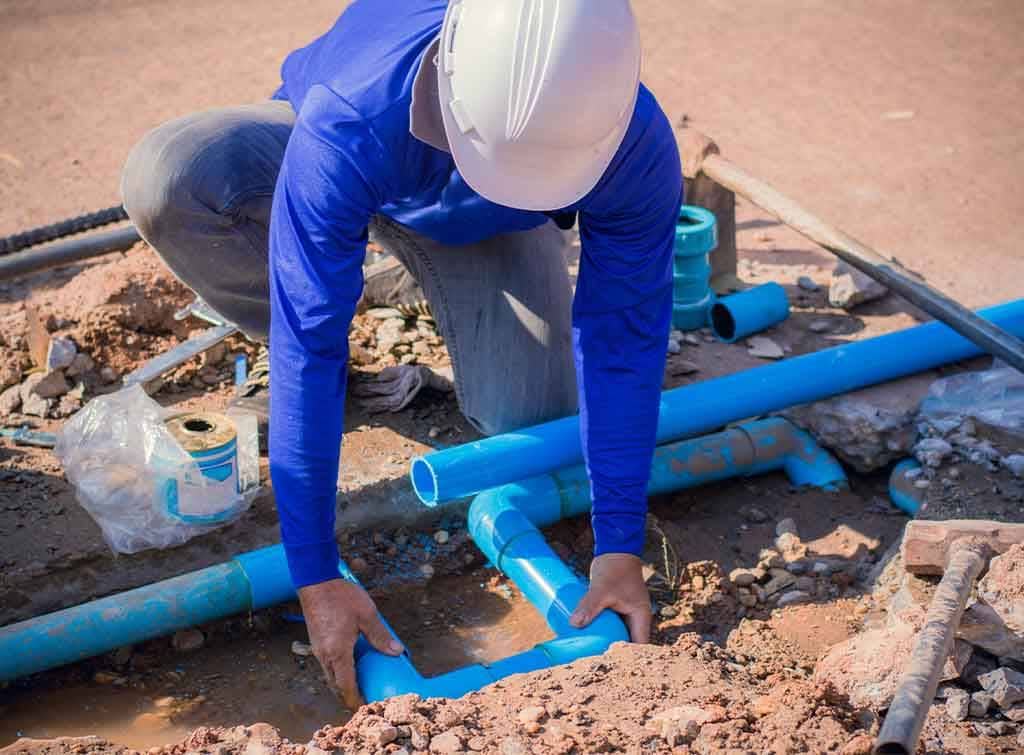Streamlining infrastructure projects is a crucial aspect of modern urban development, and trenchless water pipe replacement offers significant benefits in this regard. This innovative technique revolutionizes traditional methods of replacing underground water pipes, providing numerous advantages that enhance efficiency, reduce costs, and minimize disruptions to communities. Below are some key benefits of trenchless water pipe replacement:
Minimal Disruption – One of the primary advantages of trenchless water pipe replacement is its ability to minimize disruptions to daily life and business operations. Unlike traditional open-cut methods that require extensive excavation and road closures, trenchless techniques involve minimal surface disruption. This means that roads can remain open, traffic flow is maintained, and businesses can continue operating without major interruptions. As a result, trenchless methods help reduce inconveniences for residents and businesses in the project area.
Faster Completion – Trenchless water pipe replacement projects are typically completed faster than traditional methods. The streamlined process, which involves using advanced equipment to create underground tunnels for pipe installation, allows for quicker project completion. This rapid turnaround time is especially beneficial for critical infrastructure projects where timely completion is essential to minimize service disruptions and meet community needs.

Cost-Effective – While trenchless technology may involve higher upfront costs due to specialized equipment and expertise, it often proves to be more cost-effective in the long run. The reduced need for extensive excavation, restoration, and traffic management translates to lower overall project costs. Additionally, the faster completion times can lead to savings in labor and operational expenses, making trenchless water pipe replacement a financially viable option for infrastructure upgrades.
Preservation of Landscapes – Traditional open-cut methods of pipe replacement can result in significant damage to landscapes, green spaces, and trees along the project route. In contrast, trenchless techniques help preserve the natural environment by minimizing surface disturbance. This aspect is particularly valuable in urban areas where green spaces are limited, and environmental conservation is a priority.
Enhanced Durability – Trenchless water pipe replacement often involves the use of high-quality, durable pipes that are resistant to corrosion and wear. These modern pipes have a longer lifespan compared to older infrastructure, reducing the frequency of maintenance and replacement cycles. As a result, communities benefit from a more reliable water distribution system with fewer disruptions due to pipe failures.
Improved Public Safety – By reducing the need for extensive excavation and construction activities on roads and sidewalks, trenchless methods contribute to improved public safety. The risk of accidents related to construction zones, such as trips, falls, and vehicular incidents, is significantly reduced. This aspect enhances overall safety for pedestrians, motorists, and workers involved in the infrastructure project.
Vanrite plumbing trenchless sewer repair in Green Bay offers a multitude of benefits that contribute to streamlining infrastructure projects. From minimizing disruptions and enhancing efficiency to reducing costs and preserving the environment, the adoption of trenchless techniques represents a forward-thinking approach to modernizing water distribution systems and ensuring sustainable urban development.


 These symbols are not arbitrary; they are carefully chosen to reflect the ideals that soldiers hold dear, serving as a constant reminder of the sacrifices made on the path to preserving freedom. The significance of military rings extends beyond their aesthetic appeal; they serve as personal talismans, encapsulating the wearer’s journey and experiences. Engraved with names, ranks, and deployment dates, these rings become living chronicles of a military career, tracing the footsteps of a soldier’s odyssey. The ring becomes a companion through the trials of training, the crucible of combat, and the camaraderie forged in the crucible of shared adversity. With each scratch and patina, the ring absorbs the echoes of distant battles and the quiet moments of introspection in barracks – a tangible link to the past that transcends time.
These symbols are not arbitrary; they are carefully chosen to reflect the ideals that soldiers hold dear, serving as a constant reminder of the sacrifices made on the path to preserving freedom. The significance of military rings extends beyond their aesthetic appeal; they serve as personal talismans, encapsulating the wearer’s journey and experiences. Engraved with names, ranks, and deployment dates, these rings become living chronicles of a military career, tracing the footsteps of a soldier’s odyssey. The ring becomes a companion through the trials of training, the crucible of combat, and the camaraderie forged in the crucible of shared adversity. With each scratch and patina, the ring absorbs the echoes of distant battles and the quiet moments of introspection in barracks – a tangible link to the past that transcends time.